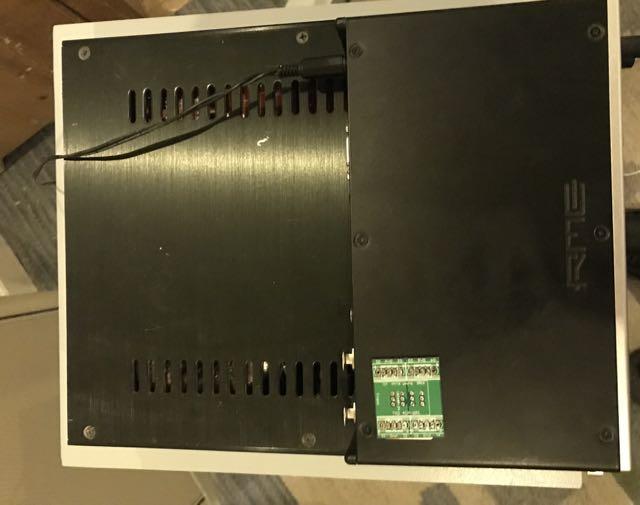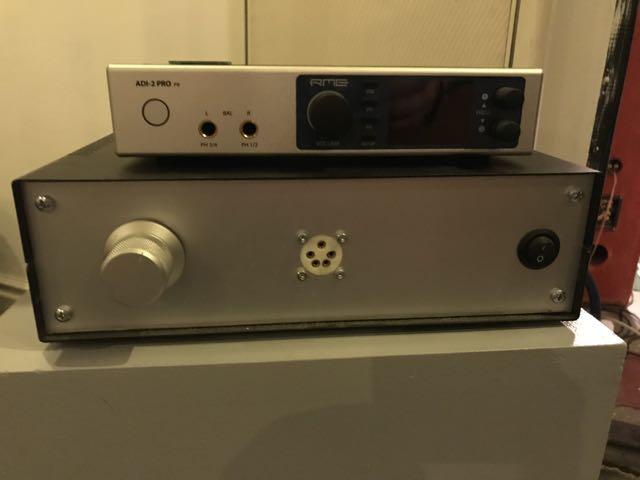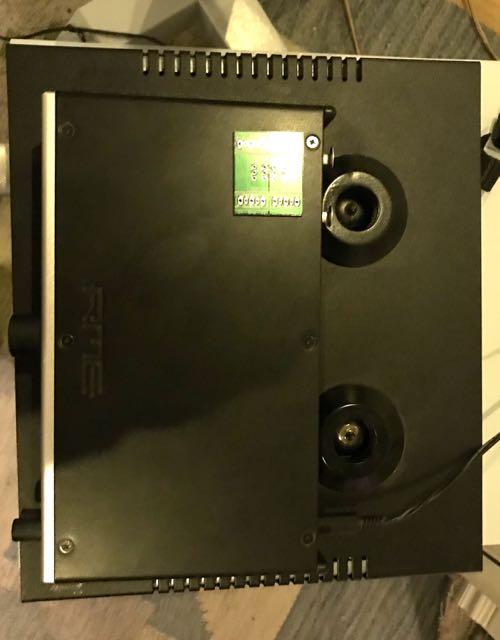
MLA
Returning Member-
Posts
322 -
Joined
-
Last visited
Content Type
Profiles
Forums
Events
Everything posted by MLA
-
This guy seems happy, though a bit principled on staying with the datasheet circuits https://www.audio-perfect.de/muses_72320.en.html
-
What could possibly go wrong ? Seriously; great idea though! Things could potentially get toasty on a 2U heatsink, so being able to choose current would be welcome flexibility.
-
Check the GRHV thread and files (James listed all flavours some time ago).
-
The C2M1000170D are in stock again at DigiKey. Grab 'em while they're hot. https://www.digikey.se/sv/products/detail/wolfspeed-inc/C2M1000170D/4399776
-
For Europe and for the 489/689, I was referred by Linear to: Ingenieur-Buero-Fluck Country:Germany Phone:+ 49-7533-949-8760 Fax:+ 49-7533-949-8762 Email:[email protected] Website:http://www.ib-fluck.de which turned out to be very close to a one man operation However, they didn't sell the 689 to private customers at the time (two years ago), so I had to use a company address to get those.
-
and now for something completely different part 3
MLA replied to kevin gilmore's topic in Do It Yourself
Had a batch of boards made on the above posted file a month or so ago and won't be using them all. You're most welcome to a pair if you want. -
Arrow also has stock. Get 'em while you can
-
Kerry Design mini GRHV\GRLV and JoaMat mini T2 Group Buy
MLA replied to mwl168's topic in Do It Yourself
Works fine for me. -
Kerry Design mini GRHV\GRLV and JoaMat mini T2 Group Buy
MLA replied to mwl168's topic in Do It Yourself
Forgot to post; my boards came in last week. Thanks! -
Kerry Design mini GRHV\GRLV and JoaMat mini T2 Group Buy
MLA replied to mwl168's topic in Do It Yourself
Mine just cleared customs... -
Kerry Design mini GRHV\GRLV and JoaMat mini T2 Group Buy
MLA replied to mwl168's topic in Do It Yourself
With Blueman2 on this; not an issue for me. -
Definitely not the case with the one I built, so something is off. Could be many things though Aside from out of phase driven cancellation, I wonder if this is unique to your HD800 or does the same thing happen with lower ohm headphones?
-
Kerry Design mini GRHV\GRLV and JoaMat mini T2 Group Buy
MLA replied to mwl168's topic in Do It Yourself
Sent. Thanks!!! -
Kerry Design mini GRHV\GRLV and JoaMat mini T2 Group Buy
MLA replied to mwl168's topic in Do It Yourself
Please increase my grlv78/79 to 6 each instead of 3 each. Thanks!!! -
Kerry Design mini GRHV\GRLV and JoaMat mini T2 Group Buy
MLA replied to mwl168's topic in Do It Yourself
I would like to go with bare GRHVxxx pcbs! -
Kerry Design mini GRHV\GRLV and JoaMat mini T2 Group Buy
MLA replied to mwl168's topic in Do It Yourself
Very nice!!! I'm all for a batch of non-assembled boards (I actually enjoy SMD soldering), but happy to go with pre-assembled also. -
So, about sizes. It will be hard to get any of the KG designs that live here really small. I happen to have a ADI2 home at the moment, so took a couple of shots. This is the ADI2 on top of a eCFA (in a repurposed case that actually used to hold a KGSS clone). Note that this eCFA runs a lot lower than max current, otherwise the case gets way too hot. All boards inside are on good heatsinks but there's simply not enough circulation to run full power. External heatsinks is I think a must if you want to run this one full out. Same thing with a KGDT (solid state input, tube output, lives in a thread somewhere here), in a highly utalitarian Modushop case: Both of these are shoehorn builds as far as my skills go; Birgir could probably fit it all a little tighter, but not me .
-
Very small does not mix too well with high voltage + significant wattage. See Spritzer’s page for a good overview of what the amp size limitations are: https://mjolnir-audio.com/
-
They are mil spec and thus derated, so can actually handle higher loads. If you look at Vishay’s CMF line, it’’s the same resistors as RN60D but with about twice as high ratings.
-
Kerry Design mini GRHV\GRLV and JoaMat mini T2 Group Buy
MLA replied to mwl168's topic in Do It Yourself
Could you please update my table numbers to 6, 3, 3, 3, 0 ? (i.e. one more complete PSU setup) ? -
and now for something completely different part 3
MLA replied to kevin gilmore's topic in Do It Yourself
Source must be balanced (or made balanced as per Pars suggestion above). Then, for one balanced channel, one board amplifies the positive signal and another board amplifies the negative signal. In this context, it might help to think of a balanced source as a four channel device. -
Hands raised , two full sets.
-
+1; JoeMat suggested a separate PSU for the +220V in a previous post somewhere. I'm planning on using the PSU Kevin created for the tube input board for the +220V (have to check it works first though :)).
-
Yes, just slightly bigger than the squarewave. I logged in to check prices and PCBWAY would send me a pack of 10 for about 20 USD if I repeat my order. Good times for DIYers :)
-
Not its forte. Really shines with planars though.






